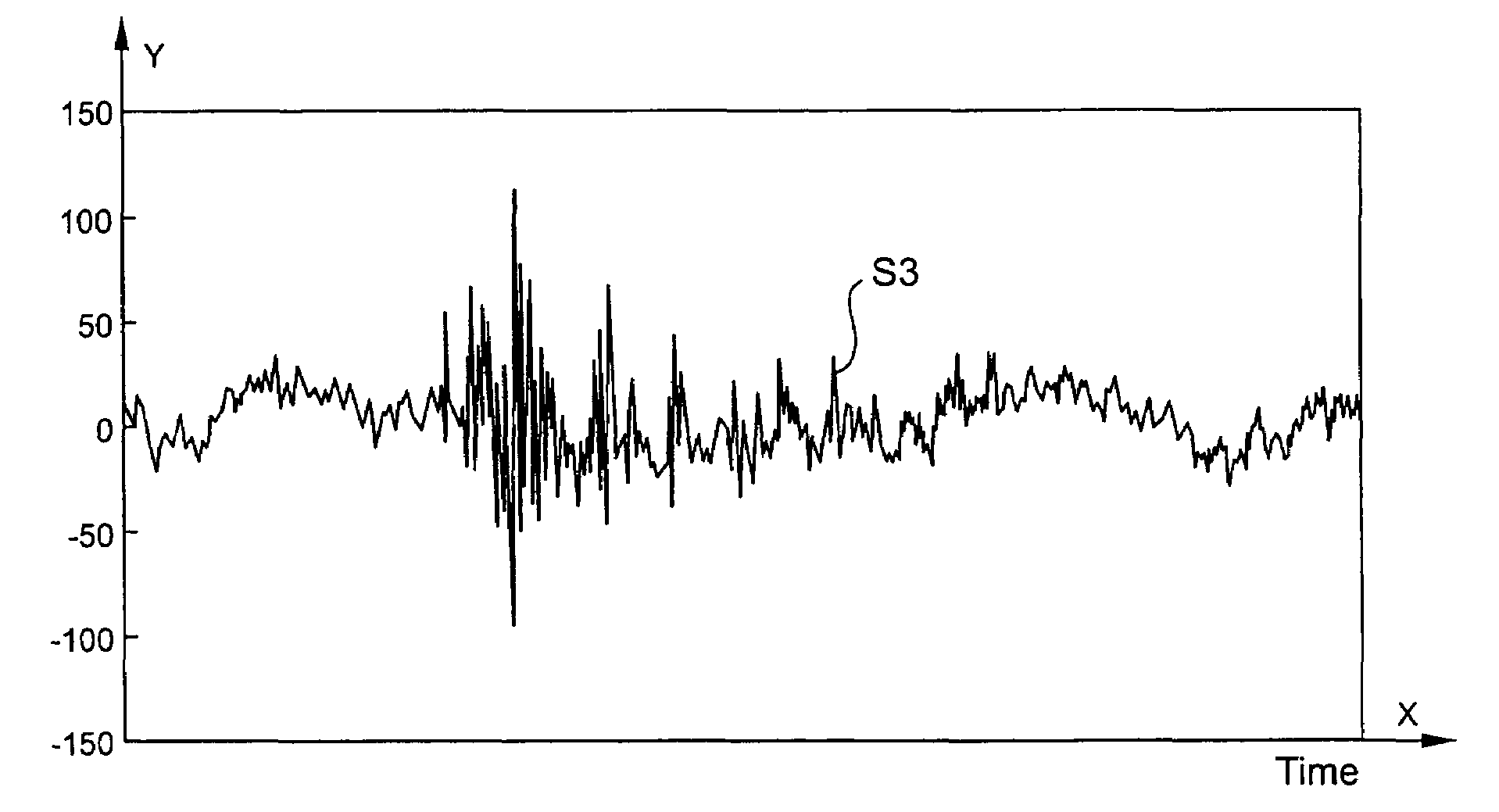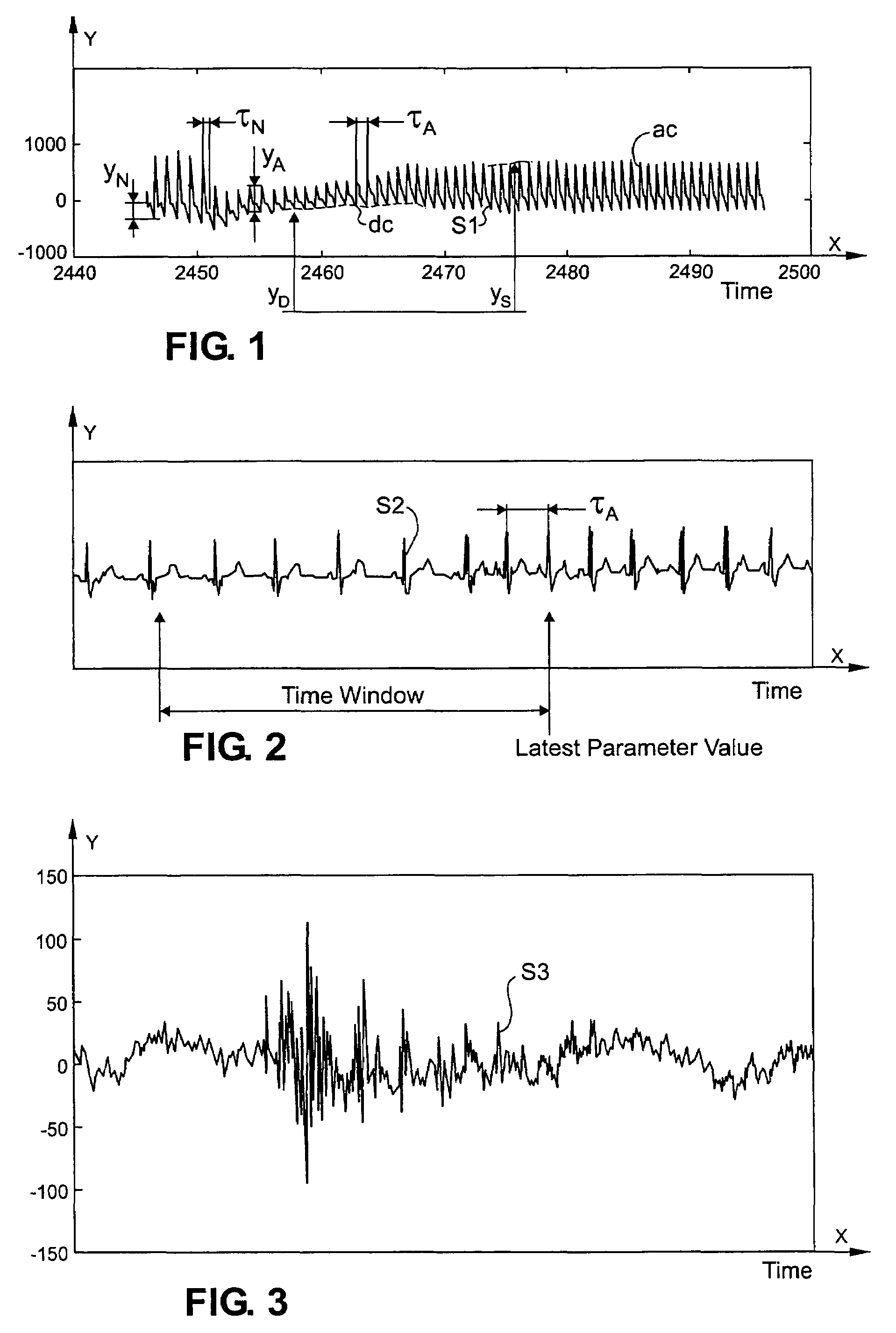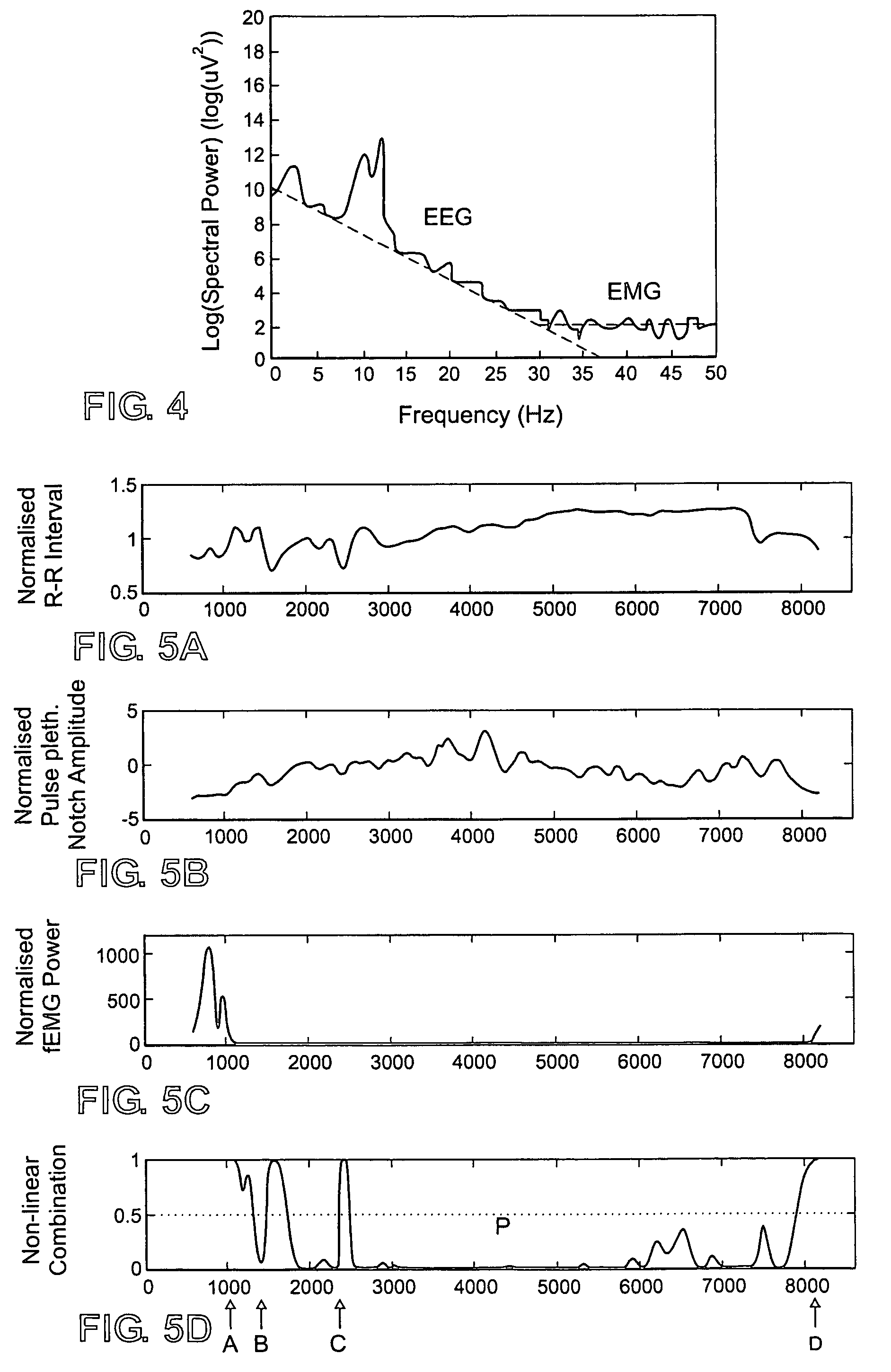Method and apparatus based on combination of physiological parameters for assessment of analgesia during anesthesia or sedation
a physiological parameter and analgesia technology, applied in the field of methods and apparatus based on combination of physiological parameters for assessment of analgesia during anesthesia or sedation, can solve the problems of reducing the pain threshold, reducing and reducing the effectiveness of post-operative pain management. the effect of improving the quality of analgesia level monitoring and improving the specificity of analgesia monitoring
- Summary
- Abstract
- Description
- Claims
- Application Information
AI Technical Summary
Benefits of technology
Problems solved by technology
Method used
Image
Examples
example
[0074]In the following an example is described, which is based on an unpublished material concerning 23 patients, single-variable based estimators based on a PPG-signal, and a fEMG-signal for the level of analgesia could classify the patients' responses to skin incision with 65-74% correctness i.e. the physiological responses could discriminate the patients who moved or did not move as a response to skin incision. When the information in these variables is combined the correctness for detection of insufficient analgesia is improved to 83%. In the example of real-time data were recorded during abdominal hysterectomy surgery. After induction (FIG. 5D: Arrow A) with fentanyl 1 μg / kg iv and propofol 1 mg / kg iv anesthesia was deepened with sevoflurane 8% in 100% oxygen via facial mask until endotracheal intubation (FIG. SD: Arrow B). Sevoflurane concentration was adjusted to equal 0.8 MAC (1.6% end-tidal). Surgery began 14 min after intubation with skin incision (FIG. 5D: Arrow C), after...
PUM
 Login to View More
Login to View More Abstract
Description
Claims
Application Information
 Login to View More
Login to View More - R&D
- Intellectual Property
- Life Sciences
- Materials
- Tech Scout
- Unparalleled Data Quality
- Higher Quality Content
- 60% Fewer Hallucinations
Browse by: Latest US Patents, China's latest patents, Technical Efficacy Thesaurus, Application Domain, Technology Topic, Popular Technical Reports.
© 2025 PatSnap. All rights reserved.Legal|Privacy policy|Modern Slavery Act Transparency Statement|Sitemap|About US| Contact US: help@patsnap.com



